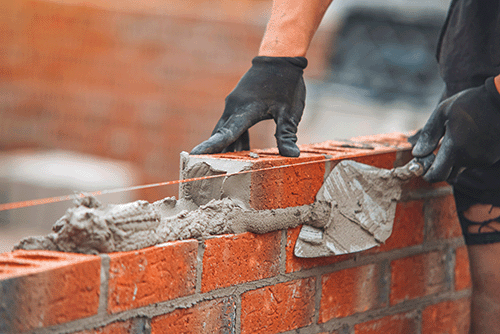Partner with Downstream

The home-building industry in 2025 is being shaped by technological advancements, sustainability demands, and evolving workforce dynamics. Smart home integration, modular construction, AI-powered automation, and on-demand labor platforms are redefining how homes are built. Veteran builders who adopt these innovations will enhance efficiency, reduce costs, and meet rising consumer expectations. This guide breaks down the key trends and strategies builders need to stay ahead.

The home building industry is evolving faster than ever. Rising material costs, persistent labor shortages, and the growing demand for smarter, more sustainable homes are transforming how builders approach projects. In 2025, veteran builders must embrace cutting-edge innovations—integrating smart home automation, modular construction, and data-driven project management to stay competitive.
Beyond construction techniques, digital platforms for on-demand labor, equipment rentals, and supply chain optimization are becoming essential for reducing inefficiencies and improving margins. This article explores the major trends shaping home building and how experienced builders can leverage them to future-proof their businesses.
Smart homes are no longer a niche luxury—they are becoming a buyer expectation. Homeowners want connectivity, automation, and energy efficiency built into their homes from day one.

Regulatory changes, tax incentives, and consumer demand are pushing sustainable home construction from an afterthought to a necessity. Builders who fail to adapt risk falling behind.
With home demand outpacing supply, modular and prefabricated construction is becoming a game-changer. These methods allow for faster builds, lower labor costs, and reduced material waste.
The skilled labor shortage continues to be one of the most pressing issues in home construction. With fewer young workers entering the trades, builders must find new ways to access qualified labor when and where they need it.
Several tech platforms now allow builders to hire skilled tradespeople on-demand, reducing reliance on outdated staffing methods:
Builders no longer need to own every piece of machinery or coordinate site services manually. On-demand equipment rental marketplaces are making it easier to access everything from earthmoving equipment to temporary fencing and portable restrooms.
Experienced builders are increasingly leveraging rental solutions to improve efficiency. The ability to quickly secure excavators, aerial lifts, generators, and site trailers ensures projects remain on schedule and within budget.
Automation is transforming how builders manage costs, timelines, and quality control. AI-driven project management, robotics, and predictive analytics are helping contractors optimize their workflow.
The home-building industry is undergoing its most significant transformation in decades. Smart home integration, sustainable materials, modular construction, and AI-driven automation are no longer future concepts—they are shaping the present.
Veteran builders who embrace on-demand labor solutions, rental marketplaces, and data-driven project management will gain a strategic advantage in an increasingly competitive landscape.
The future of home construction isn’t about working harder—it’s about working smarter. By leveraging these emerging technologies and platforms, builders can reduce costs, improve efficiency, and deliver homes that meet the demands of modern buyers.
-min.webp)
Quis nostrud exercitation ullamco laboris nisi ut aliquip ex ea commodo consequat. Duis aute irure dolor in voluptate.
